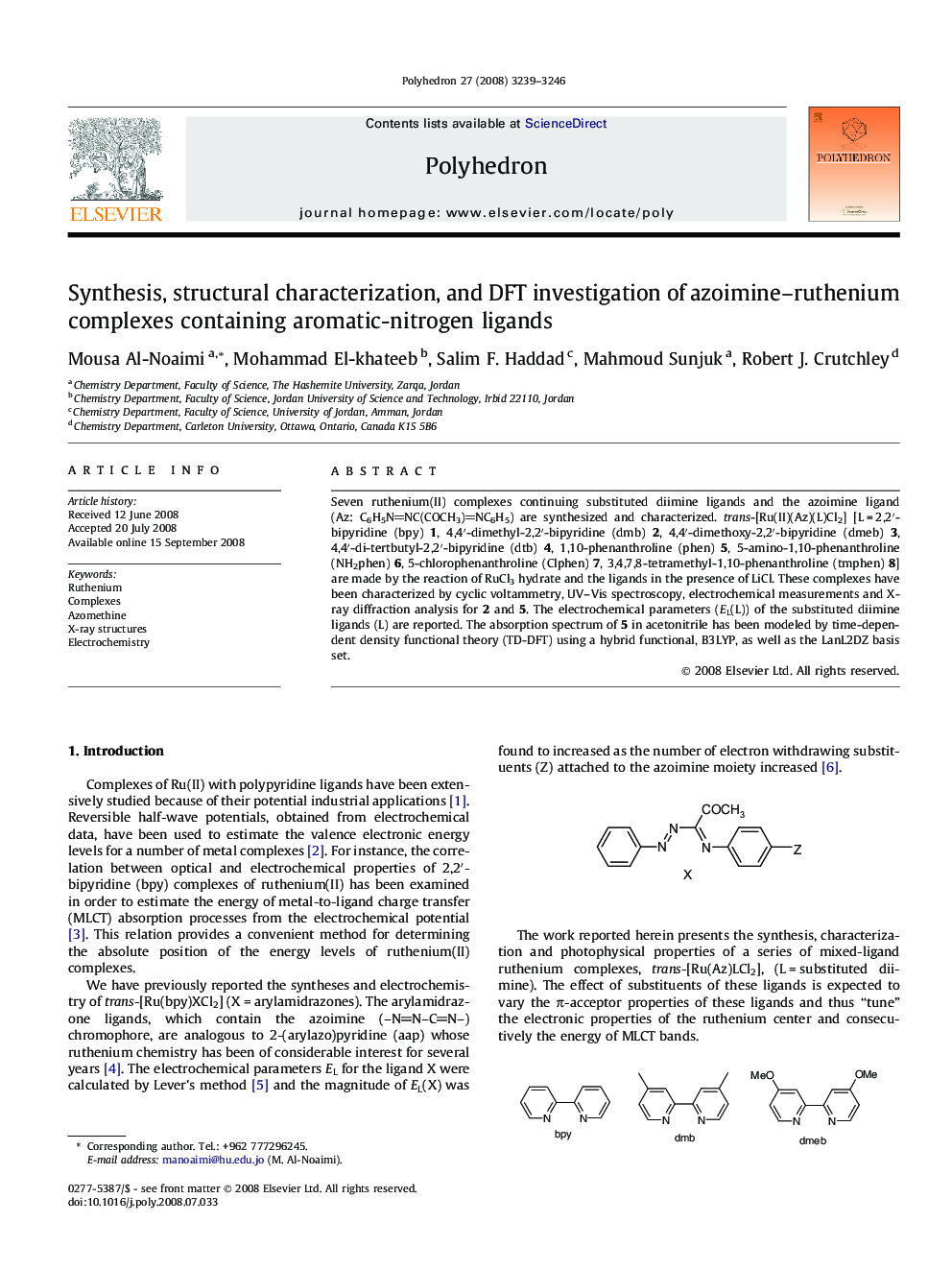| Article ID | Journal | Published Year | Pages | File Type |
|---|---|---|---|---|
| 1339135 | Polyhedron | 2008 | 8 Pages |
Seven ruthenium(II) complexes continuing substituted diimine ligands and the azoimine ligand (Az: C6H5NNC(COCH3)NC6H5) are synthesized and characterized. trans-[Ru(II)(Az)(L)Cl2] [L = 2,2′-bipyridine (bpy) 1, 4,4′-dimethyl-2,2′-bipyridine (dmb) 2, 4,4′-dimethoxy-2,2′-bipyridine (dmeb) 3, 4,4′-di-tertbutyl-2,2′-bipyridine (dtb) 4, 1,10-phenanthroline (phen) 5, 5-amino-1,10-phenanthroline (NH2phen) 6, 5-chlorophenanthroline (Clphen) 7, 3,4,7,8-tetramethyl-1,10-phenanthroline (tmphen) 8] are made by the reaction of RuCl3 hydrate and the ligands in the presence of LiCl. These complexes have been characterized by cyclic voltammetry, UV–Vis spectroscopy, electrochemical measurements and X-ray diffraction analysis for 2 and 5. The electrochemical parameters (EL(L)) of the substituted diimine ligands (L) are reported. The absorption spectrum of 5 in acetonitrile has been modeled by time-dependent density functional theory (TD-DFT) using a hybrid functional, B3LYP, as well as the LanL2DZ basis set.
Graphical abstractSeven ruthenium(II) complexes continuing substituted diimine ligands and the azoimine ligand (Az: C6H5NNC(COCH3)NC6H5) are synthesized and characterized. trans-[Ru(II)(Az)(L)Cl2] are made by the reaction of RuCl3 hydrate and the ligands in the presence of LiCl. These complexes have been characterized by cyclic voltammetry, UV–Vis spectroscopy, electrochemical measurements and X-ray diffraction analysis for two representative complexes. The electrochemical parameters (EL(L)) of the substituted diimine ligands (L) are reported. The absorption spectrum of one complex in acetonitrile has been modeled by time-dependent density functional theory (TD-DFT) using a hybrid functional, B3LYP, as well as the LanL2DZ basis set.Figure optionsDownload full-size imageDownload as PowerPoint slide
